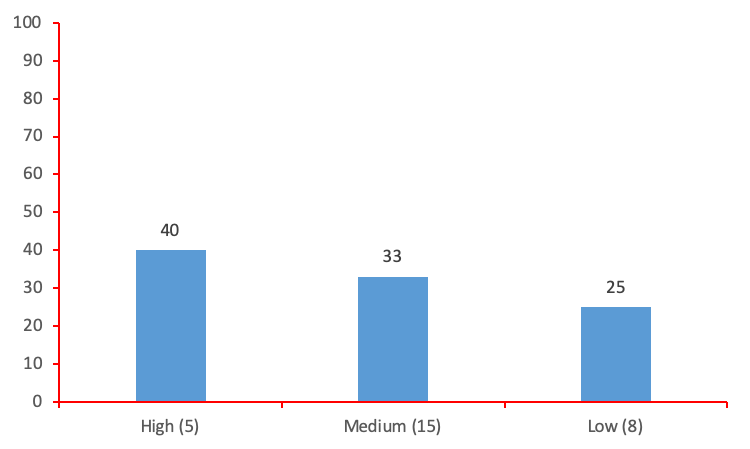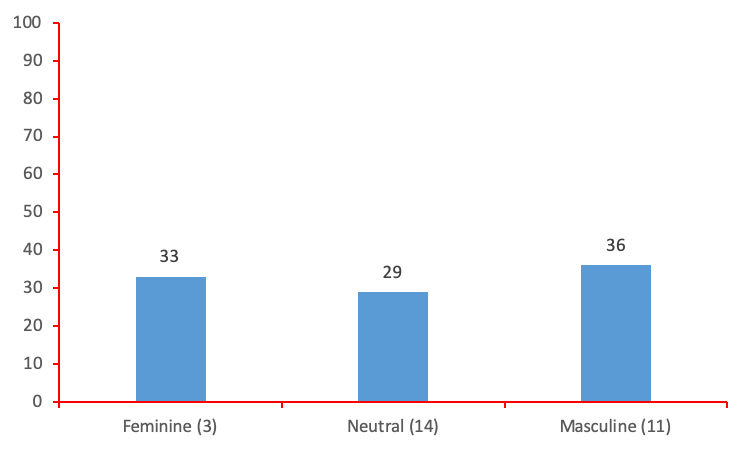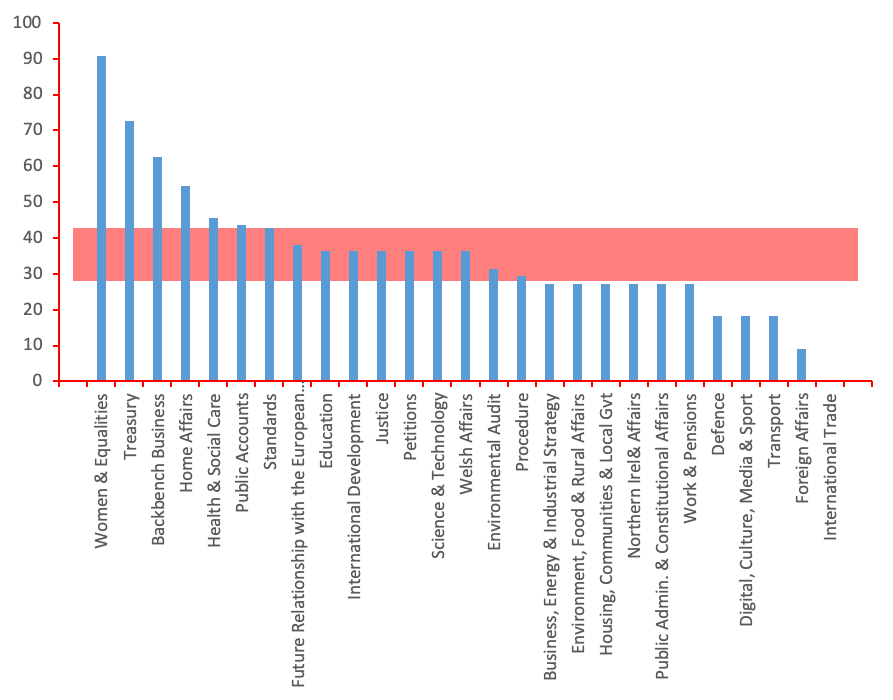Bedding down, treading water and taking two steps forward: gender equality and the 2019–20 House of Commons select committee elections
Stephen Holden Bates, Stephen McKay and Mark Goodwin assess the gender balance on the newly elected select committees, and their chairs, and find there have been clear improvements in some areas. However, further progress cannot be assumed, and they recommend Parliament considers more reforms to improve representation within its committee system.

Treasury Committee, 15 April 2020 via Parliament Live/Parliamentary copyright
The results of the elections for the UK House of Commons select committees are (nearly) out.
The 2010 Wright Reforms, designed to increase the standing of Parliament in the wake of the MPs’ expenses scandal, are now a decade old. One of the main reforms introduced was to alter the method of selection for House of Commons select committees from appointment by party managers to election by the whole House (in the case of chairships) and by party caucuses (for membership). This reform has been hailed by many as one of the reasons why select committees have become an ever more prominent and prestigious part of Parliament. There is also evidence that the reform has been good for gender equality within the committee system, particularly in terms of female MPs becoming committee chairs (although it is a moot point whether the reforms have been good for other aspects of equality, particularly ethnic minority representation). For the latest round of select committee elections, in terms of female representation, they are a case of simultaneously bedding down, treading water and taking two steps forward.
Bedding down…
The general picture from these elections is similar to that of previous rounds. The proportion of both female chairs (32.1%) and female members (35.4%) broadly mirrors that of the House of Commons as a whole (33.8%).
Moreover, as can be seen from Figures 1 and 2, female chairs are distributed relatively evenly across committees with different levels of prestige and which cover policy areas that are often (stereotypically) coded feminine, neutral or masculine (for example, Health and Social Care is typically perceived as feminine, with Defence masculine). This welcome pattern of female chairs elected across a range of portfolios and levels of prestige is one that has been emerging over the last decade and appears to be here to stay.
Figure 1: Percentage of female chairs by prestige of committee

Notes: Total number of committees in the high-, medium- and low-prestige categories in brackets. For a full explanation of the categorisation, see the authors’ article ‘Electing to Do Women’s Work? Gendered Divisions of Labor in U.K. Select Committees, 1979–2016’, in Politics and Gender.
Figure 2: Percentage of female chairs by gender category of committee

Notes: Total number of committees in each category in brackets. For a full explanation of the categorisation, see the authors’ article ‘Electing to Do Women’s Work? Gendered Divisions of Labor in U.K. Select Committees, 1979–2016’, in Politics and Gender.
…Treading water…
If we look at chair candidacies, a more mixed story emerges. While 31.5% of candidates for all committees in the 2019–20 elections were female, there were no female candidates for three of the five most prestigious committees: the Defence, the Foreign Affairs and the Treasury select committees. Indeed, there have only been two female chair candidates for these three committees since 2010 compared with 48 male candidates. This may partly be a consequence of party matters. Since 2010, these three committees have been chaired by the Conservatives, which today has around a quarter of MPs who are female (compared with over 50% for Labour). However, there is also evidence to suggest that it may be a consequence of long-standing gendered divisions of labour within the select committee system.
As can be seen from Figure 3, the distribution of female MPs across the select committees is not spread evenly; female MPs are over-represented compared to their presence in the House of Commons on some committees and under-represented on others. Indeed, on one committee – International Trade – there are no female MPs at all.
The proportion of female MPs on a number of these committees correspond to what we would expect on the basis of our recently published work on the gendered divisions of labour within the select committee system in the journal Politics and Gender. For example, we found that the Health and Social Care and the Home Affairs select committees were consistently and strongly disproportionately female, and that the Defence and the Foreign Affairs select committees were very strongly disproportionately male. For these committees at least, these gendered patterns have continued.
Figure 3: Percentage of female members for select committees 2019–20 (with 95% confidence bounds shaded in red)

…And taking two steps forward
Taking the above into account, what is perhaps most notable from Figure 3 is the proportion of women on the Treasury Select Committee. This figure of 73% is a historic high for such a high-profile committee and, being categorised as strongly disproportionately male in our research, is not in line with our expectations at all. Notwithstanding the idea that gender parity across committees should be the aim, this is a positive development and, if it becomes institutionalised, raises interesting questions about the drivers behind such a change. For example, it is notable that all the non-Conservative MPs on the committee are female, again raising questions about the role parties play in challenging gendered parliamentary behaviour and outcomes. We may also ask whether the former Conservative MP and now Baroness, Nicky Morgan, who was the first (and remains the only) female chair of the committee during the last parliament, acted as a role model across party lines for this cohort of female members.
Another noteworthy but less obvious outcome is that there are more female MPs than has most often been the case on committees that deal with aspects of Parliament itself – for example, the Procedure and the Backbench Business committees – and whose membership can often act as gatekeepers and guardians of parliamentary process.
Why might this matter and what else needs to be done?
It matters that certain trends in the gendered divisions of labour appear to be persisting and some changing because, although not straightforward, gendered patterns in the descriptive representation of female committee members probably have (continuing) ramifications for the substantive representation of women in certain policy areas. For example, it is almost certainly a very good thing for women – and, by extension, society more generally – that female MPs are no longer in the minority on the Treasury Select Committee. This is especially the case in a (post-)Covid-19 environment. We know that austerity has had – and continues to have – gendered effects in the UK, and the architects of it are already talking about retrenchment and reducing public sector debt in the aftermath of the current crisis. Therefore, it is most likely to be beneficial to women that we have a majority-female Treasury Select Committee to scrutinise the gendered dimensions of any changes to public spending and taxes.
Moreover, it is almost certainly a bad thing for women – and perhaps also democracy – that there are no female MPs on the International Trade Select Committee. Given the extent to which trade deals are critical to successful post-Brexit international relations, the exclusion of women from the committee holding government to account on this policy area is sub-optimal.
It may also matter for committees that focus on Parliament itself because, depending of course on the motivations of the members, the increase in female membership raises the possibility of making it easier to change the culture of Parliament away from a gender regime underpinned by a particular and traditional form of masculinity. The former Chair of the Women and Equalities Select Committee, Maria Miller, is now a member of the Procedure Committee for example.
And it may matter for the effectiveness of select committees and the scrutiny and accountability work they undertake because research suggests that diverse groups tend to outperform homogenous groups.
Our research in Politics and Gender showed that gendered patterns across select committee membership are not systematically disrupted because of increases in female MPs. We, therefore, cannot simply just wait for a cohort effect and put our efforts solely into getting more women elected to the House of Commons. Neither can we rely solely on existing reforms because, however positive in some regards, there is at least some circumstantial evidence to suggest that they are often in tension with powerful informal institutions that sustain gendered power imbalances.
We therefore believe Parliament should turn to some of the unimplemented recommendations of The Good Parliament report by Sarah Childs that concern committee composition and chairing:
- Recommendation 15: Introduce sex/gender quotas for the election of select committee chairs prior to the [next] general election if, by [a year prior], the percentage of women chairs is less than 40%;
- Recommendation 30: Prohibit single-sex/gender select committees, and encourage political parties to be mindful of wider representativeness in the election of members to committees.
Implementing Recommendation 15, the responsibility of the Commons Reference Group on Representation and Inclusion, would ensure that women’s leadership positions as Committee Chairs would move considerably closer to parity and may help disrupt some of the persistent gendered membership patterns highlighted above. Implementing Recommendation 30, directed to the Procedure Committee, would prevent all-female or all-male committees, such as has been seen with the composition of the current International Trade Select Committee.
This post represents the views of the authors and not those of Democratic Audit.
Acknowledgements
We would like to thank Sarah Childs and Alice Park for their suggestions concerning earlier drafts of this blog. The research was part-funded by the British Academy (SQ140007).
About the authors

Stephen Holden Bates is a Senior Lecturer at the University of Birmingham with research interests in parliamentary power and parliamentary committees.

Steve McKay is Professor of Social Research at the University of Lincoln with research interests in social policy and quantitative methodologies.

Mark Goodwin is a Lecturer in Politics at Coventry University with research interests in the UK Parliament, select committees and British public policy.





 Democratic Audit's core funding is provided by the Joseph Rowntree Charitable Trust. Additional funding is provided by the London School of Economics.
Democratic Audit's core funding is provided by the Joseph Rowntree Charitable Trust. Additional funding is provided by the London School of Economics.